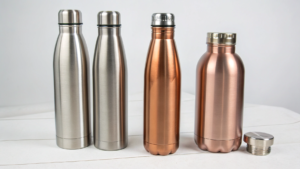The water bottle should be BPA-free1?
You grab a water bottle every day, but did you know some could be secretly harming you? BPA in plastics is a hidden danger we often ignore.
BPA-free water bottles are essential because BPA (Bisphenol A) can leak into your water, especially when heated, and disrupt hormones. Choosing BPA-free options like stainless steel2 or Tritan plastic reduces health risks.
Most people don’t realize how often they expose themselves to harmful chemicals. Switching to safer materials isn’t just hype—it’s a necessity. Let’s break down why this matters.
Do all bottles have to be BPA free?
Not all bottles are BPA-free, but they should be. Many cheap plastics still contain this chemical, risking your health with every sip.
No, not all bottles are BPA-free, but they should be. Older plastic bottles, especially those marked #7, often contain BPA. Look for labels like "BPA-free," or choose glass/stainless steel to avoid risks.
!
Why settle for questionable plastics? Here’s what to consider:
- Plastic types to avoid
- #7 Plastic (Polycarbonate): Commonly contains BPA.
- Low-quality reusable bottles: May leach chemicals when scratched or heated.
- Safer alternatives
- Stainless steel: Doesn’t leach chemicals, durable.
- Tritan plastic: BPA-free, lightweight, shatterproof.
- Glass: Chemical-free but fragile.
- What to check before buying
- Labels ("BPA-free," "Food-grade").
- Material codes (avoid #7).
- Brand reputation.
Even "BPA-free" doesn’t always mean completely safe—some substitutes (like BPS) may have similar risks. Research matters.
What are the side effects of BPA in water bottles?
BPA isn’t just bad—it’s linked to serious health issues. From hormone problems to long-term diseases, the risks are real.
BPA mimics estrogen, disrupting hormones and potentially causing fertility issues, diabetes, and even cancer. Kids and pregnant women are especially vulnerable to these effects.

How BPA harms the body
- Hormonal imbalance: BPA tricks the body into thinking it’s estrogen.
- Developmental risks: Linked to ADHD in kids.
- Chronic diseases: Associated with heart disease and obesity.
Who’s most at risk?
| Group | Risk |
|---|---|
| Pregnant women | Can affect fetal development |
| Infants | Early hormone disruption |
| Teenagers | Impacts puberty |
BPA builds up over time. Even small daily exposures add up. Switching bottles is an easy fix.
Is BPA-free plastic safe?
"BPA-free" sounds safe, but some replacements might be just as risky. Not all alternatives are equal.
Some BPA-free plastics use chemicals like BPS or BPF, which may have similar hormone-disrupting effects. Always verify materials (like Tritan) and prioritize stainless steel or glass for absolute safety.

Pros and cons of BPA-free plastics
- Pros:
- No BPA leaching.
- Often more durable than regular plastic.
- Cons:
- Some substitutes (BPS) are untested.
- Can still degrade over time.
Best truly safe options:
- Stainless steel: 100% non-leaching.
- Glass: Purely inert but breakable.
- Certified Tritan: Rigorously tested for safety.
Check for third-party certifications (like FDA approval) to ensure safety claims are real.
Conclusion
Ditch risky plastics—opt for BPA-free bottles like stainless steel or Tritan. Your health and the planet will thank you.





